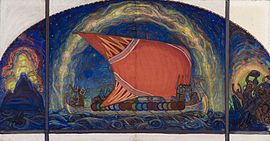.mw-parser-output .hidden-begin{box-sizing:border-box;width:100%;padding:5px;border:none;font-size:95%}.mw-parser-output .hidden-title{font-weight:bold;line-height:1.6;text-align:left}.mw-parser-output .hidden-content{text-align:left}You can help expand this article with text translated from the corresponding article in Estonian. (November 2016) Click [show] for important translation instructions.
Machine translation, like DeepL or Google Translate, is a useful starting point for translations, but translators must revise errors as necessary and confirm that the translation is accurate, rather than simply copy-pasting machine-translated text into the English Wikipedia.
Do not translate text that appears unreliable or low-quality. If possible, verify the text with references provided in the foreign-language article.
You must provide copyright attribution in the edit summary accompanying your translation by providing an interlanguage link to the source of your translation. A model attribution edit summary is Content in this edit is translated from the existing Estonian Wikipedia article at [[:et:Lennuk (Triik)]]; see its history for attribution.
You should also add the template ((Translated|et|Lennuk (Triik))) to the talk page.
For more guidance, see Wikipedia:Translation.
| Lennuk | |
|---|---|
| Estonian: Lennuk | |
 | |
| Artist | Nikolai Triik |
| Year | 1910 |
| Medium | tempera and pastel on paper |
| Subject | Lennuk, the ship of Kalevipoeg |
| Dimensions | 73.8 cm × 137 cm (29.1 in × 54 in) |
| Location | Kumu Art Museum, Tallinn |
| Owner | Art Museum of Estonia |
Lennuk is a painting by Nikolai Triik of 1910,[1] depicting Lennuk,[2] the ship of Kalevipoeg, son of Kaleva, from the Estonian national epic Kalevipoeg.
The work measures 73.8 cm by 137 cm and is painted in tempera and pastel on paper.[1]
It is part of the collection of the Art Museum of Estonia and is exhibited in the Kumu Art Museum in Tallinn.[1]